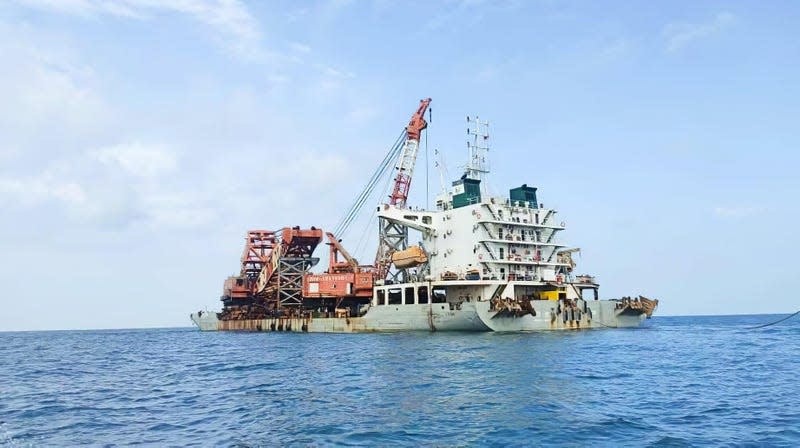Chinese Ship Accused Of Looting British WW2 Shipwrecks

Chuan Hong 68, the detained Chinese bulk carrier
Low-background metal, material produced before the detonation of nuclear bombs in the 1940s, is highly valued for medical and scientific purposes. The clear constraints mean that low-background metal can’t be created. The material must be taken from existing items, and scavengers have controversial and illegal lengths to acquire it. Recently. a Chinese ship has been detained for allegedly salvaging metal from World War II-era British shipwrecks designated as war graves.
BBC News reports Malaysian maritime police have detained the Chinese bulk carrier Chuan Hong 68. According to the Malaysian Maritime Enforcement Agency, authorities found cannon shells from HMS Prince of Wales and HMS Repulse aboard the vessel. The Royal Navy ships were sunk in battle with the Imperial Japanese Navy off the coast of Malaysia in the South China Sea in December 1941, just three days after the attack on Pearl Harbor. The engagement and sinkings killed 842 sailors.
Read more
The Chuan Hong 68 had been operating in Malaysian waters over the past year on a license to salvage a Chinese vessel. However, Prince of Wales and Repulse has been targeted by scrap dealers over the past decade. Local fishermen alerted authorities to activity around the war graves. A British Ministry of Defence spokesperson told the BBC, “ Where we have evidence of desecration of the wrecks of Royal Navy vessels, we will take appropriate action, including working with regional governments and partners to prevent inappropriate activity at such sites.”
The value of low-background metal has dropped as background nuclear radiation has faded to near-natural levels in the decades since the end of large-scale nuclear weapons testing. However, the added value is worth the risk for many.
More from Jalopnik
Sign up for Jalopnik's Newsletter. For the latest news, Facebook, Twitter and Instagram.

 Yahoo Autos
Yahoo Autos 